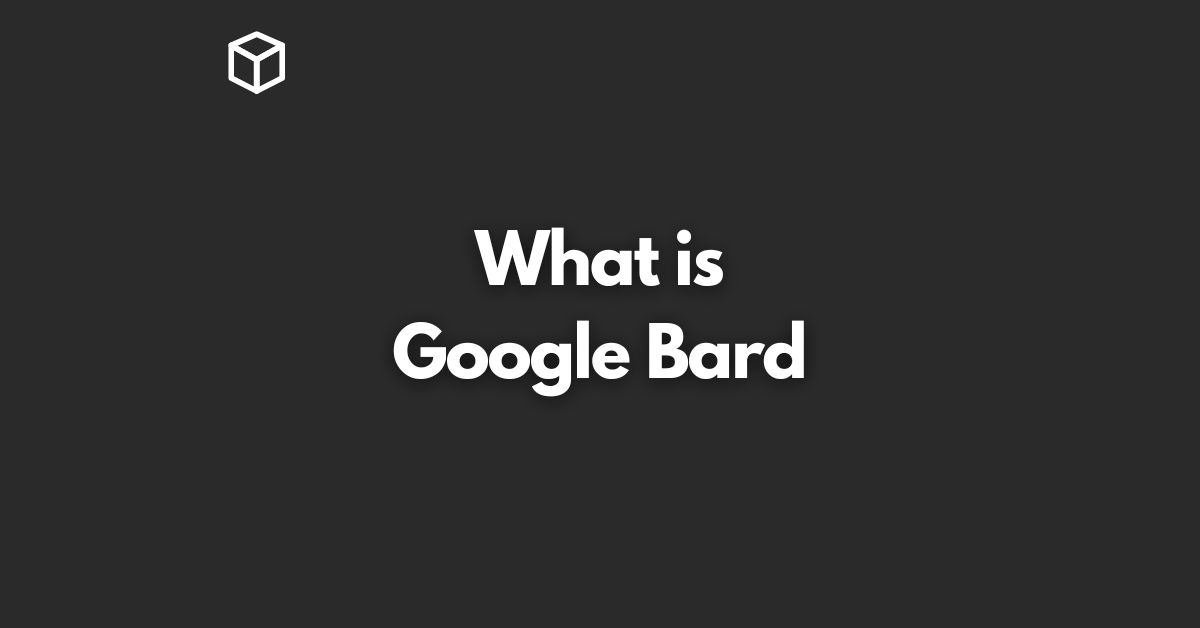Google Bard is an experimental conversational AI chat service developed by Google.
Similar to ChatGPT, Bard aims to assist users through interactive conversations, but with the distinction that it retrieves information from the web. It possesses capabilities such as coding, solving math problems, and aiding with writing tasks.
The announcement of Google Bard took place on February 6, as declared by Sundar Pichai, the CEO of Google and Alphabet.
Although Bard was a completely new concept at the time of the announcement, it initially utilized Google’s Language Model for Dialogue Applications (LaMDA), which had been introduced two years earlier.
Google Bard operates on PaLM 2, which is Google’s most advanced large language model (LLM) and was unveiled during the Google I/O conference in 2023.
PaLM 2 represents an enhanced version of its predecessor, PaLM, which was released in April 2022. This upgraded model enables Bard to operate more efficiently, achieve higher performance levels, and address previous issues.
During its initial release, Bard employed a lightweight model version of LaMDA. This decision was made because it required less computational power and could be scaled to accommodate a larger user base. LaMDA, built on Google’s neural network architecture called Transformer, shares similarities with GPT-3, the language model powering ChatGPT, as both were constructed using Transformer, according to Google.
Google’s choice to use its own LLMs, LaMDA and PaLM 2, was a bold move considering that other popular AI chatbots like ChatGPT and Bing Chat rely on the GPT series of LLMs.
As of Google I/O, Google announced that Bard would no longer have a waitlist and would be accessible to the general public.
Previously, the waitlist for Bard opened on March 21, 2023, granting access to a limited number of users in the US and UK on a rolling basis.
Bard currently supports Japanese and Korean languages, and Google plans to expand its language support to include 40 more languages in the near future.
Google Bard encountered controversy during its launch when a demo provided inaccurate information about the James Webb Space Telescope (JWST).
This incident raised concerns about the accuracy and reliability of the chatbot’s responses. Google acknowledged the need for a rigorous testing process and initiated a Trusted Tester program to address these issues.
Additionally, Bard received negative feedback for its performance, including difficulties answering basic questions, longer response times, lack of automatic source citation, and an overall inferior user experience compared to established competitors.
Sundar Pichai, the CEO of Google, likened Bard to a “souped-up Civic” in comparison to ChatGPT and Bing Chat.
Prior to Bard’s release, Google’s LaMDA faced criticism when former Google engineer Blake Lemoine claimed in a document that LaMDA might possess sentience.
Google denied these claims, placed Lemoine on paid administrative leave, and eventually terminated his employment, leading the controversy to subside. Google’s transition from LaMDA to PaLM 2 is expected to mitigate many of Bard’s existing issues.
Google’s decision to unveil Bard can be attributed to the success of ChatGPT, which gained over one million users within a week of its launch.
Analysis by Swiss bank UBS identified ChatGPT as the fastest-growing app of all time. Capitalizing on this trend, Google and other tech companies, such as Microsoft with its AI-enhanced Bing, are entering the space to capitalize on the growing demand for AI-powered conversational agents.




